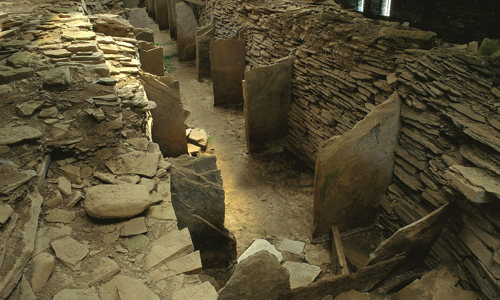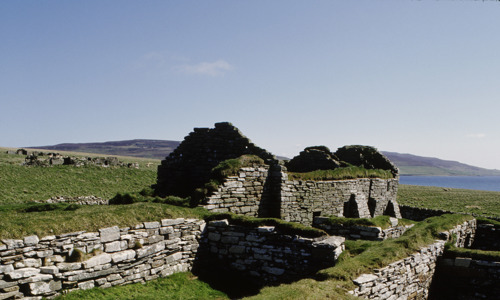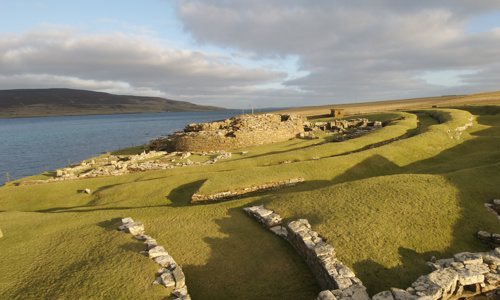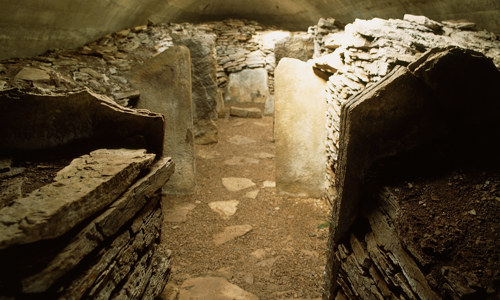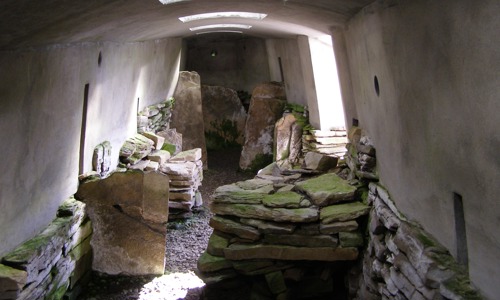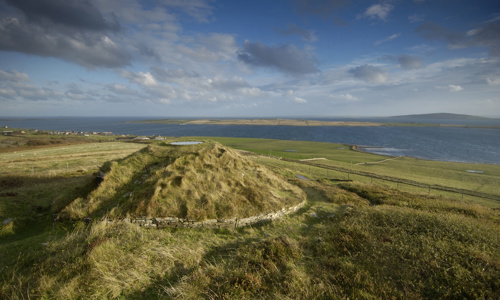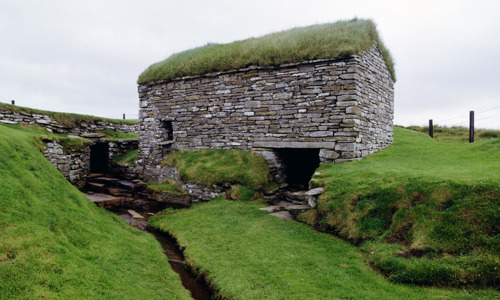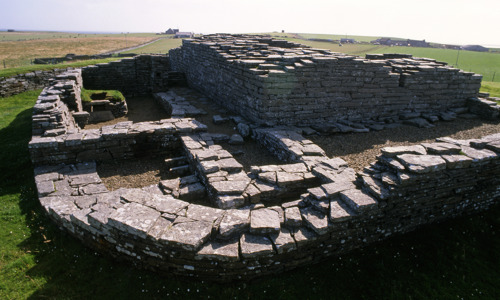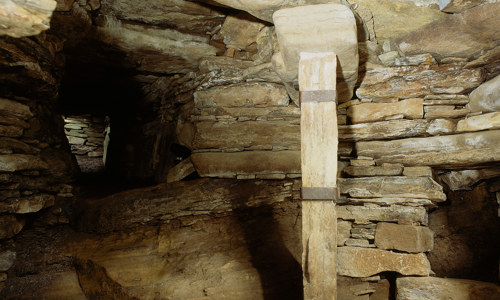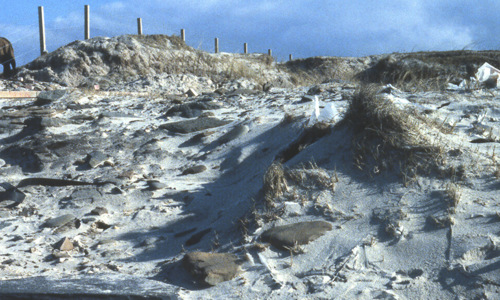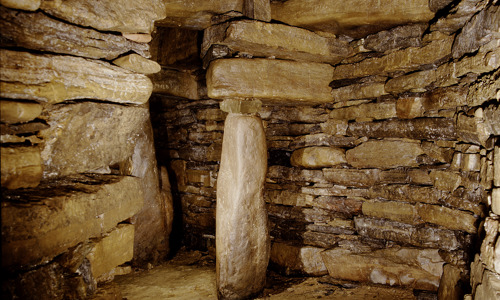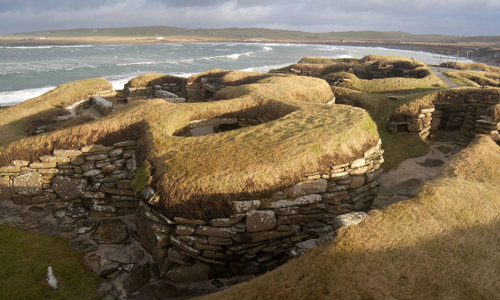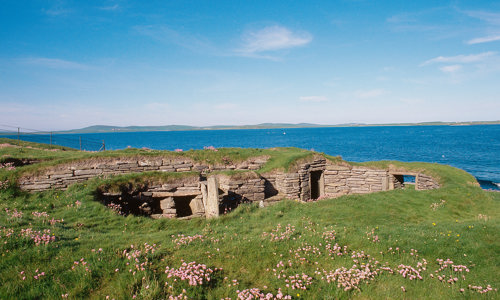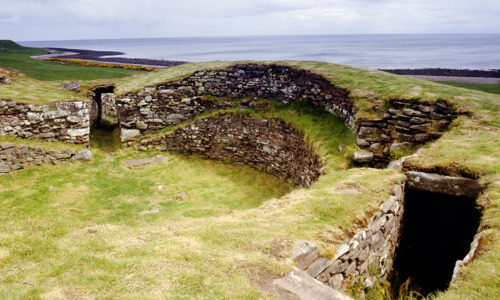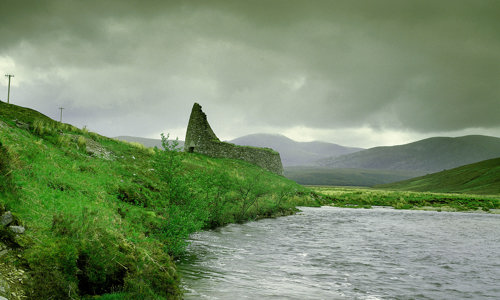History
Midhowe Broch was built on a narrow promontory beside Eynhallow Sound more than 2,000 years ago. A thick stone barrier and ditch across the neck of the promontory defend it from the landward side. The remainder of the settlement is surrounded by the sea – indeed, part of it has been lost to coastal erosion.
The site is dominated by the broch tower itself, which is surrounded by the remains of other, smaller buildings. They seem to have been built as ancillary houses, but later they were used as workshops. An iron-smelting hearth is still visible in one.
The heart of the village
The broch tower at Midhowe today stands 4.3m high, but it could have been double this height when fully built. Its narrow entrance faces out to sea, away from the landward approach.
In its interior, visitors can still clearly see:
- stone partitions
- a spring-fed water tank
- a hearth with sockets, which may have held a roasting spit
It’s probably deliberate that the broch towers of Midhowe on Rousay and Gurness on mainland Orkney are visible from one another. These may have been the main strongholds on each side of Eynhallow Sound.
Everyday finds
Archaeologists digging here in the 1930s found a remarkable array of everyday artefacts. These included:
- stone and bone tools, associated with grain processing, spinning and weaving
- pieces from crucibles and moulds, indicating bronze-working, but rather oddly not iron working
- a fragment from a Roman bronze vessel
The last item is of special interest to archaeologists. It recalls the proud boast by Roman historian Eutropius in the AD 300s that the king of Orkney had submitted to Emperor Claudius in AD 43.


